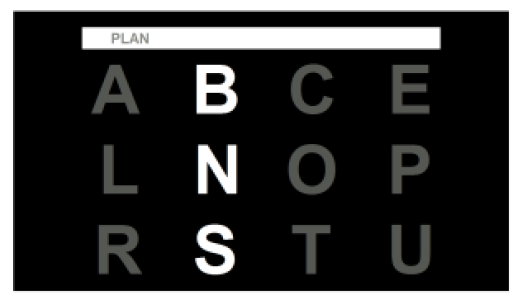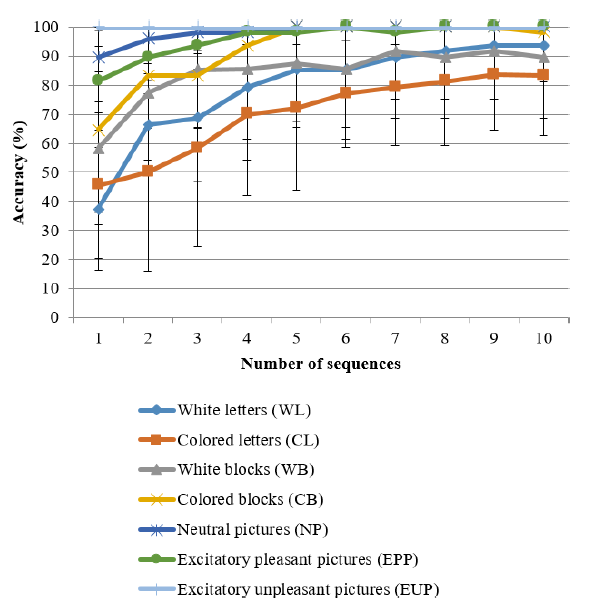COLLA 2018 – The Eight International Conference on Advanced Collaborative Networks, Systems and Applications
Vom 24.06.2018 bis 28.06.2018 fand die diesjährige COLLA Konferenz in Venedig statt.
Teilnehmer aus der ganzen Welt stellten ihre wissenschaftlichen Arbeiten in Form von Präsentationen vor. Am Ende jeder Präsentation war Zeit für kritische Fragestellungen und eine offene Diskussionsrunde.
Die Themengebiete reichten von App-Entwicklungen für den brasilianischen Musik-Unterricht bis hin autonomen Fahren und Brain-Computer-Interfaces (BCI).
Um einen Eindruck der Vorträge zu erhalten habe ich drei Präsentationen aufgegriffen, grob den Inhalt zusammengefasst und im folgenden Abschnitt niedergeschrieben. Eine komplette Liste aller Themen befindet sich am Ende des Beitrags.
Evaluation of a P300 Brain-Computer Interface Using Different Sets of Flashing Stimuli
Álvaro Fernández-Rodríguez, Francisco Velasco-Álvarez und Ricardo Ron-Angevin
Quelle: http://www.thinkmind.org/index.php?view=article&articleid=braininfo_2018_1_10_90007
Ein interessanter Vortrag über die Kommunikationsmöglichkeiten von körperlich benachteiligten Personen mittels BCI. In der Arbeit wurde erforschte, wie die Verbesserung der Erkennung eines P300 Signals umgesetzt werden kann. Dieses Signal wird vom menschlichen Gehirn produziert, wenn die verkabelte Person auf etwas reagiert und kann mittels Elektroenzephalografie (EEG) aufgezeichnet werden. Es gibt bereits andere Möglichkeiten die Reaktion eines Menschen zu messen bzw. Software zu steuern, wie z.B. dem Fokus der Pupillen. Allerdings gibt es auch Menschen denen es nicht mehr möglich ist selbst Pupillen zu bewegen. Um mit den bisherigen Methoden ein brauchbares Ergebnis zu erzielen, ist es notwendig 10-20 Wiederholungen durchzuführen. Die Methode, zu sehen in Abbildung 1, verwendet dazu ein Display, auf welchem Buchstaben, Zahlen und Zeichen zu sehen sind. Jeweils eine komplette Reihe leuchtet sehr kurz in Abständen auf. Die Testperson muss hierbei den Fokus auf den gewünschten Wert (z.B. den Buchstaben P) richten.
Um dieses Verfahren effizienter zu gestalten, wurde 7 verschiedene Szenarien getestet und ausgewertet:
- Weiße Zeichen
- Farbige Zeichen
- Weiße Blöcke um die Zeichen
- Farbige Blöcke um die Zeichen
- Neutrale Bilder (diese werden kurz anstatt des Zeichens eingeblendet)
- Positive Bilder
- Negative Bilder
Das Ergebnis ist in Abbildung 2 zu sehen. Während bei der Nutzung von weißen Zahlen mindestens 7 Sequenzen (2-maliges Aufblinken, einmal horizontal, einmal vertikal) notwendig waren, um eine Genauigkeit von mindestens 90% zu erreichen, war es mit den negativen Bildern möglich mit bereits 1 Sequenz ein extrem sicheres Ergebnis zu erhalten.
Da allerdings keine Langzeitstudien durchgeführt wurden, ist es fraglich, ob der Anwender nicht abstumpft und dadurch der Ausschlag des Signals schwächer wird, bzw. ob der Nutzer überhaupt bereit ist, immer furchtbare Bilde sehen zu müssen, um kommunizieren zu können.
Comparison of Artificial Intelligence Based Oscillometric Blood Pressure Estimation Techniques: A Review Paper
Ekambir Sidhu, Voicu Groza
Quelle: http://www.thinkmind.org/index.php?view=article&articleid=intelli_2018_1_30_60013
Wenigen bekannt, dennoch ein ständiges Problem. Es ist bis zum heutigen Tage schwierig bis unmöglich genau Blutdruckwerte zu messen. Die einzige Möglichkeit genaue Werte zu erhalten ist, ist einen Katheter in eine periphere Arterie einzuführen. Dieses Verfahren wird allerdings nur bei Operationen angewandt, da es ansonsten zu aufwendig und meist nicht erlaubt oder gewünscht ist. Die indirekte Messung mittels Manschette ist heute noch Gang und Gebe, obwohl diese Methode bereits 1907 entwickelt wurde. Hierbei sind viele Faktoren entscheidend die das Ergebnis verfälschen können. Die Aufregung des Patienten, die Position der Arme, Beine und Manschette, Medikationen und das Hauptproblem der Messung an sich. Da der systolische und diastolische Wert nacheinander gemessen werden, sind beide Werte immer unabhängig voneinander. Sie sollten jedoch exakt im selben Zeitpunkt gemessen werden, um eine aussagekräftige Information zu liefern. Diese Arbeit untersucht die Möglichkeit moderne Algorithmen in Verbindung mit Künstlicher Intelligenz einzusetzen, um genauere Ergebnisse zu erhalten.
Cross-Platform Development – Suitability of Current Mobile Application Frameworks
Jan Christoph, Daniel Rösch, Thomas Schuster
Link zum Papier:
https://www.thinkmind.org/index.php?view=article&articleid=colla_2018_2_10_50017
Offizielle Seite:
https://www.iaria.org/conferences2018/COLLA18.html
Bildergalerie:
- Konferenz
- Venedig Altstadt
- Gala Dinner
Übersicht aller Arbeiten:
BRAININFO 2018, The Third International Conference on Neuroscience and Cognitive
Brain Information
BRAININFO 1: Neuroscience and Cognitive Brain Information
Session chair: Ricardo Ron-Angevin
Evaluation of a P300 Brain-Computer Interface Using Different Sets of Flashing Stimuli
Álvaro Fernández-Rodríguez, Francisco Velasco-Álvarez, Ricardo Ron-Angevin
Training and Transfer Effects Achieved with N-Back Task in Older Subjects Evidenced with
EEG
Nele Vanbilsen, Valentina Pergher, Benjamin Wittevrongel, Jos Tournoy, Brigitte
Schoenmakers, Céline Gillebert, Marc Van Hulle
COLLA 2018, The Eighth International Conference on Advanced Collaborative Networks,
Systems and Applications
COLLA 1: Cooperation and Collaboration Mechanisms
Session chair: George Blankenship
Supporting Collaborative Interaction Among Learners Using Collaborative Learning System
InCircle
Noriko Uosaki, Takahiro Yonekawa, Chengjiu Yin
The Integration of Home Collected Data into the Veterans Administration Health System
George Blankenship, Ellen Hans
Digital Strategies for Municipalities – Digitization as a Collaborative Task [POSTER]
Frederike Marie Oschinsky, Kristina Lemmer, Hans Christian Klein, Jenny Hoffmann
COLLA 2: Machine Learning Applications for Smart Collaborative Networks
Session chair: Noriko Uosaki
Cross-Platform Development – Suitability of Current Mobile Application Frameworks
Jan Christoph, Daniel Rösch, Thomas Schuster
A Scalable Vector Symbolic Architecture Approach for Decentralized Workflows
Christopher Simpkin, Ian Taylor, Graham Bent, Geeth de Mel, Raghu Ganti
COLLA 3 / SmaCit: Smart and Connected Cities: Creating People-centered City
Government
Session chair: Leonidas Anthopoulos
Introduction / Editorial [PRESENTATION]
Leonidas Anthopoulos
Standardisation of Enterprise Architecture Development for Smart Cities
Zohreh Pourzolfaghar, Viviana Bastidas, Aleksas Mamkaitis, Markus Helfert
Teamwork Behavior in Smart and Sustainable Cities Ecosystems
Panos Fitsilis, Paraskevi Tsoutsa, Leonidas Anthopoulos, Omiros Ragos
Gathering Insights on Citizen Participation – Towards Building an Instrument to Study Citizen-Centric Communities
Tobias Siebenlist, Agnes Mainka
Open Discussion and Closing Remarks [DISCUSSION]
Leonidas Anthopoulos
HUSO 2018, The Fourth International Conference on Human and Social Analytics
HUSO 1: Social Computing
Session chair: Arnulfo P. Azcarraga
Acquisition and Analyses of Lessons Learned from Social Network R&D Using Machine
Learning
Marco Javier Suarez Baron, Abdelraouf Ishtaiwi, Johan David Diaz Mendivelso
Simulating Psychological Experiments: An Agent-Based Modeling Approach
Lukas Reuter, Jan Ole Berndt, Ingo J. Timm
Identities, Motivations, Social Representations in Information and Communication Situations
and Digital Society – The case of Santiago de Compostela Trippers
Christian Bourret, Joumana Boustany
M-learning as a Motivational Method in Music Education
Walena Magalhães, Diogo Magalhães, Jônatas Carvalho, Jefferson Monteiro, Cláudio Monteiro
HUSO 2: Social Human Analytics
Session chair: Jan Ole Berndt
Fast Extraction of Statistically Relevant Descriptor Words for Social Media Communities
Arces A. Talavera, Arnulfo P. Azcarraga
Toward “Satisficing” Creativity Effort within Project Management
Leonie Hallo, Alex Gorod, Anama Morriss
Using Adaptive Immersive Environments to Stimulate Emotional Expression and Connection in Dementia Care: Insights from User Perspectives Towards SENSE-GARDEN
Gemma Goodall, Ileana Ciobanu, Ronny Broekx, Jon Sørgaard, Iulian Anghelache, Catalina
Anghelache-Tutulan, Mara Diaconu, Sigrid Mæland, Therese Borve, Audun Digranes Dagestad,
Piet Bormans, Marleen Custers, Katrin Losleben, Rita Valadas, Alda Matias, Andreea Marin,
Kristin Taraldsen, Walter Maetzler, Mihai Berteanu, Artur Serrano
Mobile Technology to Support Didactic Strategies
Bianca Martins, Geane Quixabeira, Leysson Barros, Claudio Monteiro
HUSO 3 / SACR: Social Analytics and Community Resilience
Session chair: Dennis Folds
Introduction / Editorial [PRESENTATION]
Dennis J. Folds
Human Systems-of-Systems, a Methodology and Measurement Framework for Community
Resilience
Tom McDermott
A Method for Engineering Resilient Organizational Workforce Systems
Clayton Hutto, Dennis Folds
An Approach to Web Adaptation by Modelling User Interests Using TF-IDF: A Feature
Selection and Multi-criteria Approach Using AHP
Dimitris Kardaras, Ilias Petrounias, Stavroula Barbounaki, Stavros Kaperonis
Open Discussion and Closing Remarks [DISCUSSION]
Dennis J. Folds
ICCGI 2018, The Thirteenth International Multi-Conference on Computing in the Global
Information Technology
ICCGI 1: Information Technology
Session chair: Xuejun Tian
Conceptualizing and Validating Information Security Culture as a Multidimensional Second-
Order Formative Construct
Akhyari Nasir, Ruzaini Abdullah Arshah, Mohd Rashid Ab Hamid
Educational Application for K-1 Children Using Augmented Reality
Asma Ashfaq, Shakil Ahmed, Sania Akhtar, Ayesha Aamir, Aiman Khan
Detecting Counterfeit Bills and Their Forgery Devices Using CNN-based Deep Learning
Soo-Hyeon Lee, Hae-Yeoun Lee
ICCGI 2: Mobility and Multimedia Systems
Session chair: Ruzaini Abdullah Arshah
Improving the Performance of WiMAX by Setting Holdofftime According to the the Number of Handshake times [PRESENTATION]
Xuejun Tian, Yuta Iwatsuki, Takashi Okuda
Using Online Manifold Learning for Color Image Quality Assessment
Meiling He, Mei Yu, Hua Shao, Hao Jiang, Gangyi Jiang
A Survey of Power-Aware Network-on-Chip Design Techniques
Emmanuel Ofori-Attah, Michael Opoku Agyeman
ICWMC 2018, The Fourteenth International Conference on Wireless and Mobile
Communications
ICWMC 1: Mobility Trends
Session chair: Ismail Yildiz
Mobile Technology and Conservation Areas: A Case Study
Erivaldo Martins, Jeferson Scarton, Juliana Edmundo, Mauro Santos, Wanderson Oliveira,
Claudio Monteiro
Blockchain and Its Impact on Telecom Networks
Rajat Kochhar, Barjinder Kochar, Jatinder Singh, Varun Juyal
ICWMC 2: Performance Evaluation, Simulation and Modeling of Wireless Networks and Systems
Session chair: Inone Joo
A Modern Quality of Service Evaluation Approach of VOLTE Calls Focused on Packet Delays
Ismail Yıldız
Suboptimal Decoding Scheme Based on Parallel Detection for ATSC 3.0 MIMO System
Hyeongseok Kim, Myeonggil Yeom, Jeongchang Kim, Sung Ik Park, Namho Hur
Diffusion Recursive Least Square Adaptive Networks with Neighbor-Selection
Wael Bazzi, Vahid Vahidpour, Amir Rastegarnia, Azam Khalili
ICWMC 3: Mobile Systems
Session chair: Claudio Monteiro
Utilizing the Maximum Spanning Tree to Construct Stability-based Routes in Self-driving
Vehicular Networks
Hao-Ze Jheng, Hsin-Han Lin, Kuo-Feng Ssu, Yu-Yuan Lin
Vehicle MIMO System for High Reliability and Low Latency in NR-based eV2X
Sangmi Moon, Sara Bae, Intae Hwang
Jammer Localization Method Using Degradation of GPS C/No Measurements
Inone Joo, Cheonsig Sin
INTELLI 2018, The Seventh International Conference on Intelligent Systems and
Applications
INTELLI 1: Intelligent Systems and Applications
Session chair: Voicu Groza
A 3D Convolutional Neural Network for Anomalous Propagation Identification
Hansoo Lee, Jonggeun Kim, Sungshin Kim
Towards a Robust Imputation Evaluation Framework
Anthony Chapman, Wei Pang, George Coghill
Comparison of Artificial Intelligence Based Oscillometric Blood Pressure Estimation
Techniques: A Review Paper
Ekambir Sidhu, Voicu Groza
INTELLI 2 / InManEnv: Intelligent Manufacturing Environments
Session chair: João Pedro Correia dos Reis
Component Models for Embedded Systems in Industrial Cyber-Physical Systems
Luis Neto, Gil Gonçalves
Process Modeling and Parameter Optimization for Machine Calibration in Smart Manufacturing for Laser Seam Welding
Joao Reis, Gil Gonçalves
Adaptability in Smart Manufacturing Systems
Gil Gonçalves, João Reis, Rui Pinto, Michael Peschl
A Software Architecture for Transport in a Production Grid
Leo van Moergestel, Erik Puik, John-Jules Meyer
INTERNET 2018, The Tenth International Conference on Evolving Internet
INTERNET 1: Internet Challenges
Session chair: Dirceu Cavendish
Blockchain-based NAT Management for 5G Age
Younchan Jung, Marnel Peradilla
TCP State Driven MPTCP Packet Scheduling for Streaming Video
Dirceu Cavendish, Ryota Matsufuji, Shinichi Nagayama, Daiki Nobayashi, Takeshi Ikenaga
Detection of Manipulated Communications in a Q&A Site by Considering Time Lags Between Answer Submission and Problem Resolution
Yasuhiko Watanabe, Kenji Umemoto, Ryo Nishimura, Yoshihiro Okada
SDN Based Cloud Platform for Smart Vehicles
Tijana Devaja, Živko Bojović, Anastazia Žunić
INTERNET 2 / IOTBCHAIN: Internet of Things and Blockchain
Session chair: Nicola Fabiano
Introduction / Editorial [PRESENTATION]
Nicola Fabiano
European Data Protection Regulation and the Blockchain Analysis of the Critical Issues and
Possible Solution Proposals
Nicola Fabiano
Blockchain Beyond Cryptocurrencies: A Real-World Use Case – A Non-Repudiable Supply
Chain Tracking System
Filippo Bosi, Michele Cappelletti, Stefano Monti, Guido Ravagli
Warm Wallets: A Safer Design to Achieve Business Automation for Blockchain-Based Services
Filippo Bosi, Michele Cappelletti, Guido Ravagli, Lorenzo Manzoni, Stefano Monti, Emanuele Pagliara
Open Discussion and Closing Remarks [DISCUSSION]
Nicola Fabiano
VEHICULAR 2018, The Seventh International Conference on Advances in Vehicular
Systems, Technologies and Applications
VEHICULAR 1: Fundamentals on Communication and Networking
Session chair: Justin Rohrer
Efficient V2X Data Dissemination in Cluster-Based Vehicular Networks
Yongyue Shi, Xiao-Hong Peng, Guangwei Bai
Geographic Centroid Routing for Vehicular Networks
Justin Rohrer
PhyCoNet-Sim: A Framework for Physically Accurate Simulations of Vehicular Ad-Hoc
Networks
Steffen Moser, Ralf Schleicher, Frank Slomka
VEHICULAR 2: Experiments and Challenges
Session chair: Xiaohong Peng
Toward Safety and Security Development by Identifying Interfaces of Automotive Functions
Toru Sakon, Yukikazu Nakamoto
Self-Consistent NLOS Detection in GNSS-Multi-Constellation Based Localization under Harsh Conditions
Pierre Reisdorf, Gerd Wanielik
Reducing Car Consumption by Means of a Closed-loop Drag Control
Camila Chovet, Baptiste Plumjeaeu, Sebastien Delprat, Marc Lippert, Laurent Keirsbulck,
Maxime Feingesicht, Andrey Polyakov, Jean-Pierre Richard, Franck Kerhervé
VEHICULAR 3: Security and Evaluation
Session chair: Felipe Jimenez
A Proposal for a Comprehensive Automotive Cybersecurity Reference Architecture
Christoph Schmittner, Martin Latzenhofer, Shaaban Abdelkader, Markus Hofer
A TCO Analysis Tool Based on Constraint Systems for City Logistics
Johannes Kretzschmar, Mirko Johlke, Wilhelm Rossak
VEHICULAR 4: Unmanned Vehicles
Session chair: Christoph Schmittner
UAVs-assisted Data Collection in Vehicular Network
Mohamed Ben Brahim, Hakim Ghazzai, Hamid Menouar, Fethi Filali
LiDAR-based SLAM Algorithm for Indoor Scenarios
Felipe Jiménez, Miguel Clavijo, Javier Juana
VEHICULAR 5 / CITS I: Cooperative Intelligent Transportation Systems I
Session chair: Manabu Tsukada
Introduction / Editorial [PRESENTATION]
Manabu Tsukada, Masaaki Sato
Wide Transmission of Proxy Cooperative Awareness Messages
Masahiro Kitazawa, Manabu Tsukada, Hideya Ochiai, Hiroshi Esaki
Evaluation of WiFi Access Point Switching for Vehicular Communication Using SDN
Kaito Iwatsuki, Nishiki Hase, Kenya Sato
VEHICULAR 6 / CITS II: Cooperative Intelligent Transportation Systems II
Session chair: Masaaki Sato
Evaluation of Safety and Efficiency Simulation of Cooperative Automated Driving through
Intersection
Kenta Kimura, Shuntaro Azuma, Kenya Sato
Evaluation of a Method for Improving Pedestrian Positioning Accuracy using Vehicle RSSI
Yuya Nishimaki, Hisato Iwai, Kenya Sato
Improvement of False Positives in Misbehavior Detection
Shuntaro Azuma, Manabu Tsukada, Kenya Sato
Open Discussion and Closing Remarks [DISCUSSION]
Manabu Tsukada, Masaaki Sato
VISUAL 2018, The Third International Conference on Applications and Systems of Visual
Paradigms
VISUAL 1: Visual Computation and Modeling
Session chair: Pawel Gasiorowski
3D Simulation-based Analysis of Individual and Group Dynamic Behaviour in Video
Surveillance
Pawel Gasiorowski, Vassil Vassilev, Karim Ouazzane
K-Nearest Neighbours Based Classifiers for Moving Object Trajectories Reconstruction
Muhammad Afzal, Karim Ouazzane, Vassil Vassilev
Gamification of Vision Training Using Tablet [PRESENTATION]
Yang Ishigaki, Tomoya Handa





